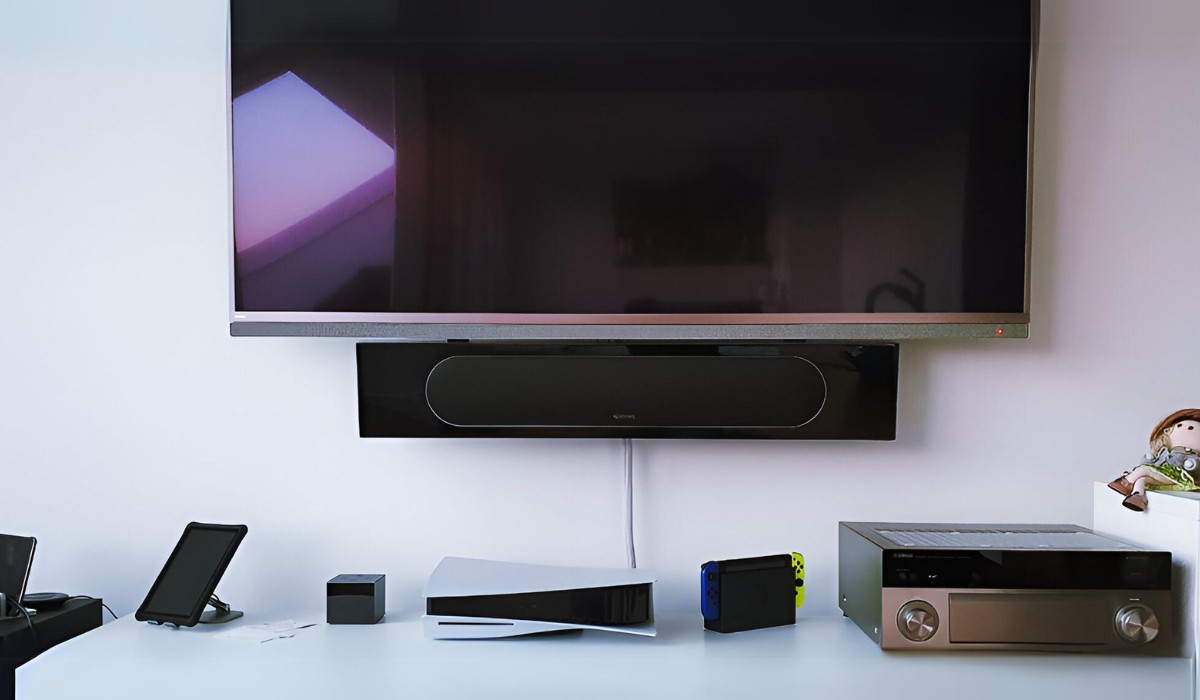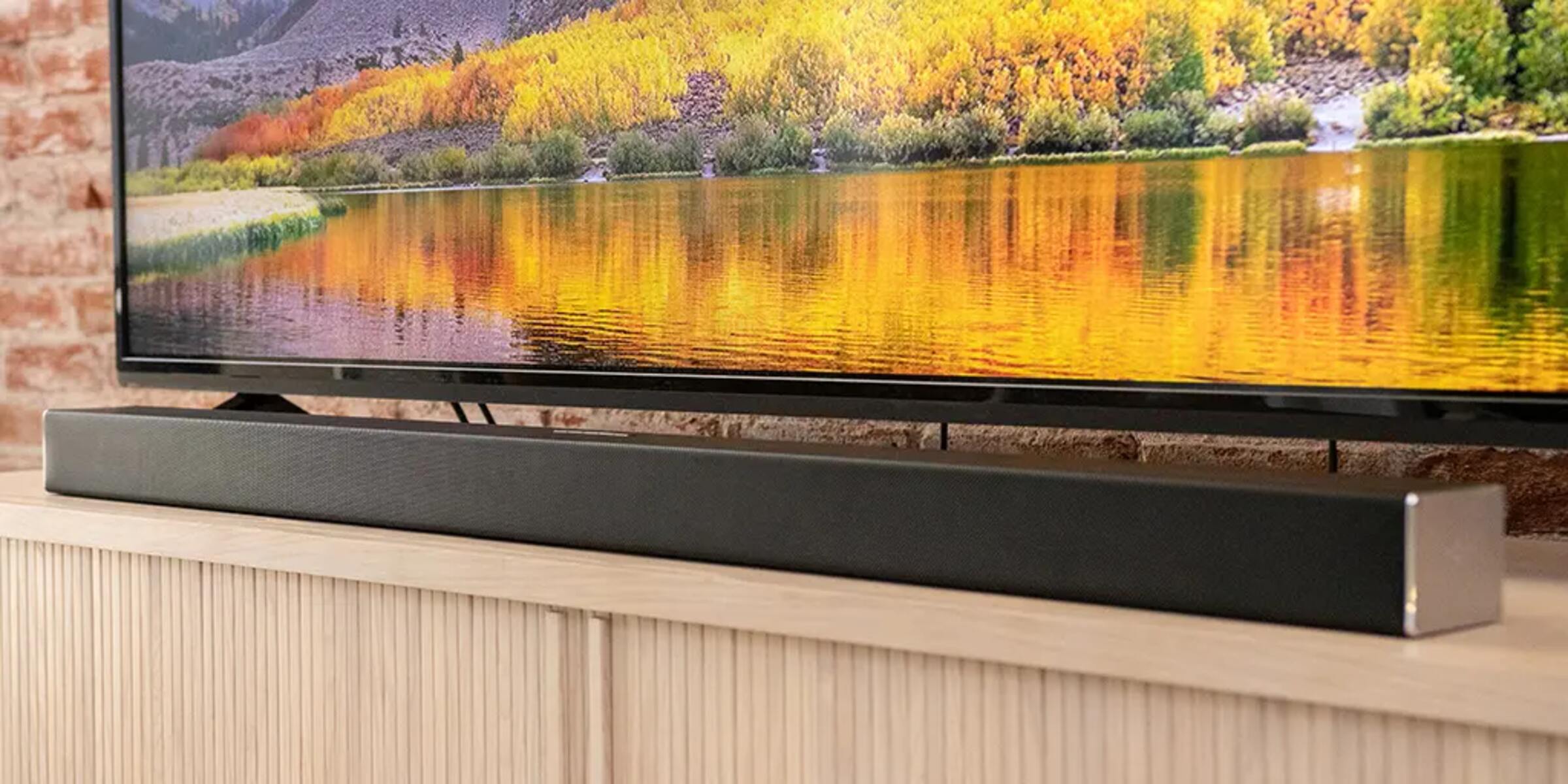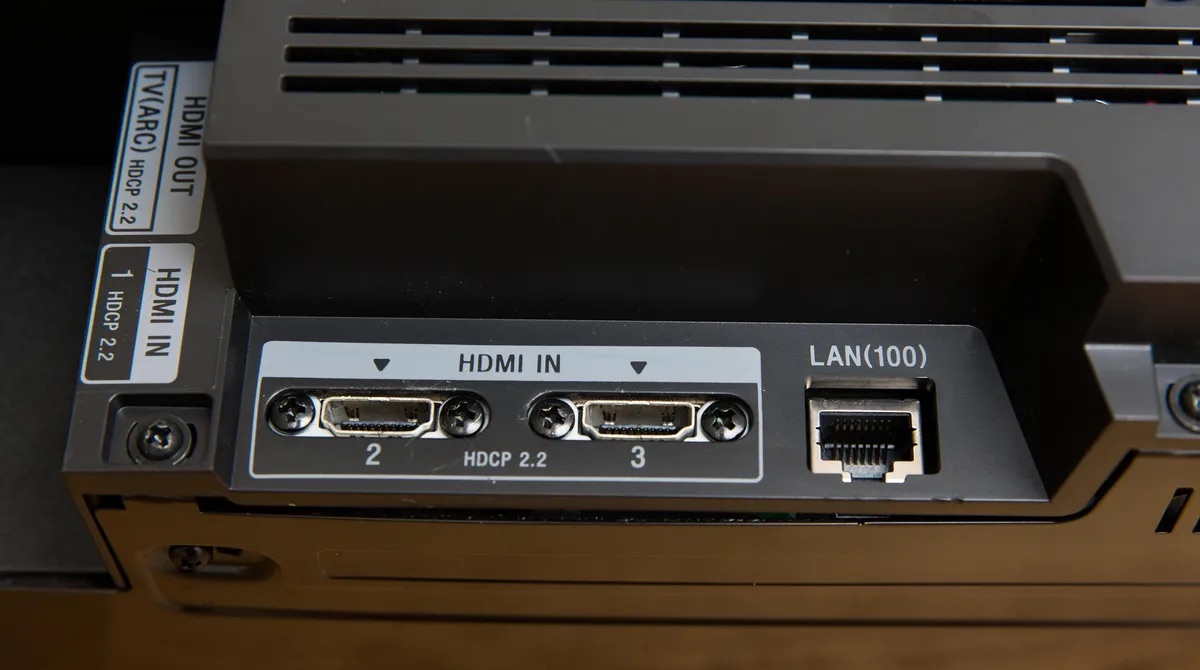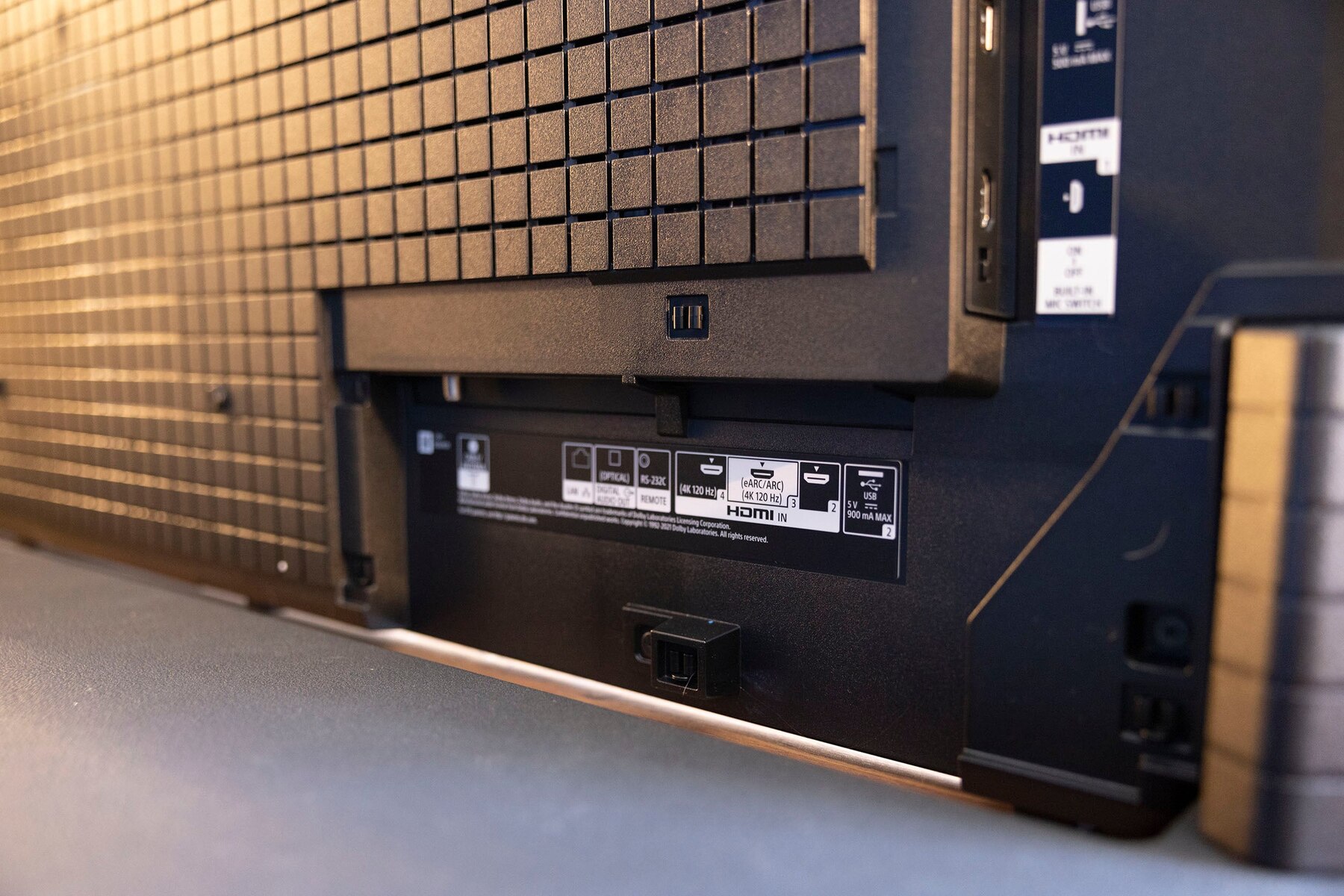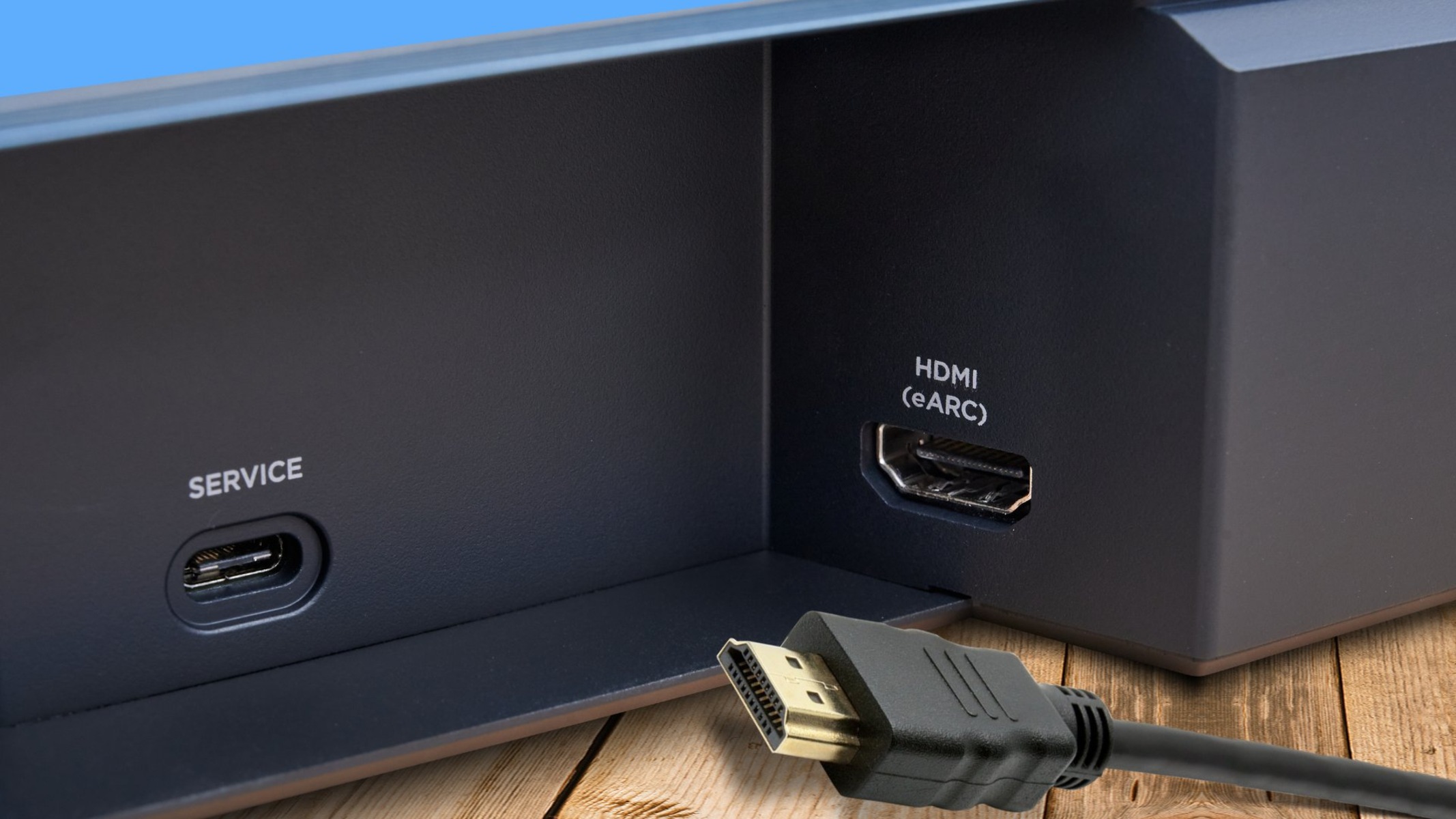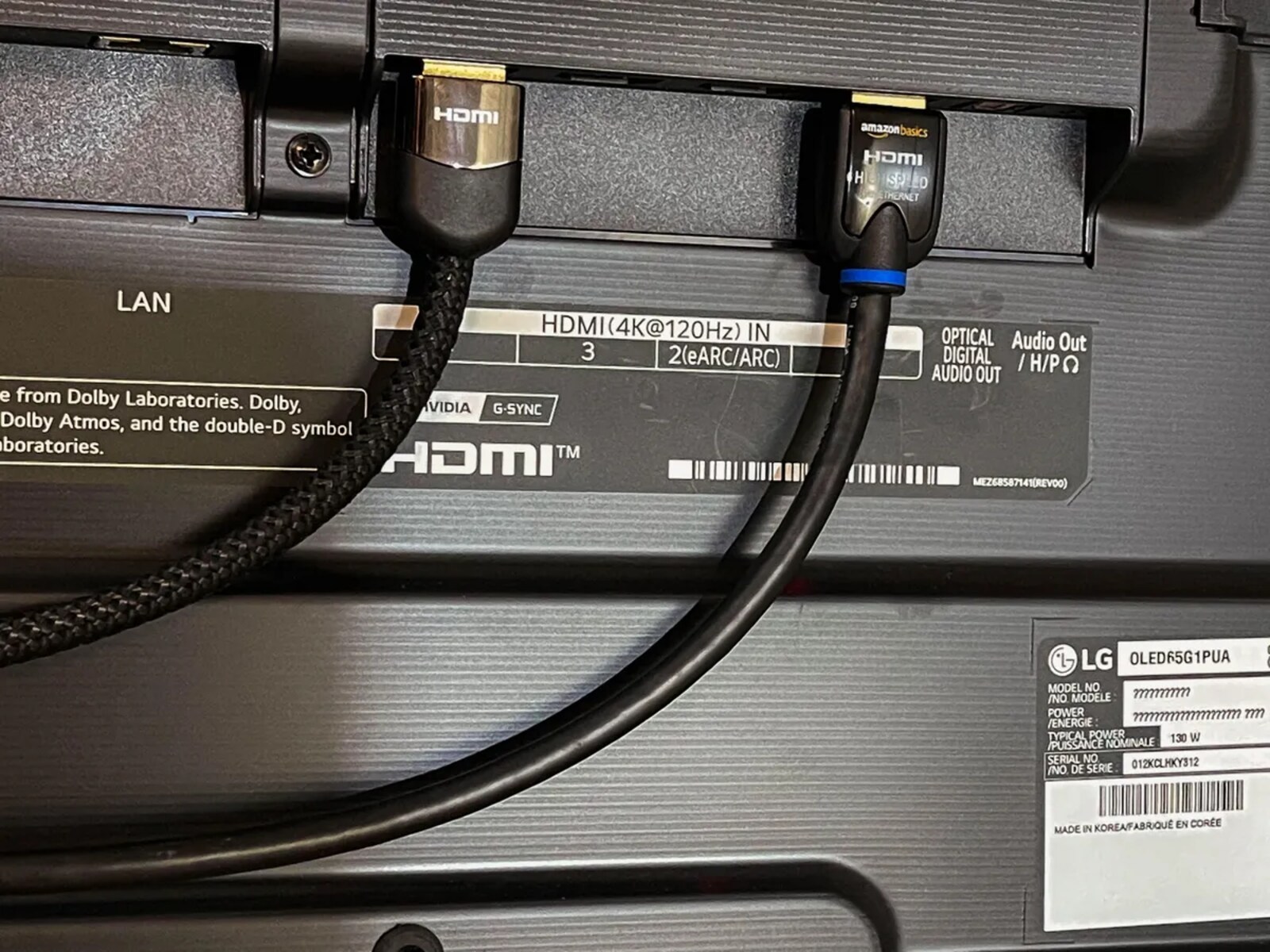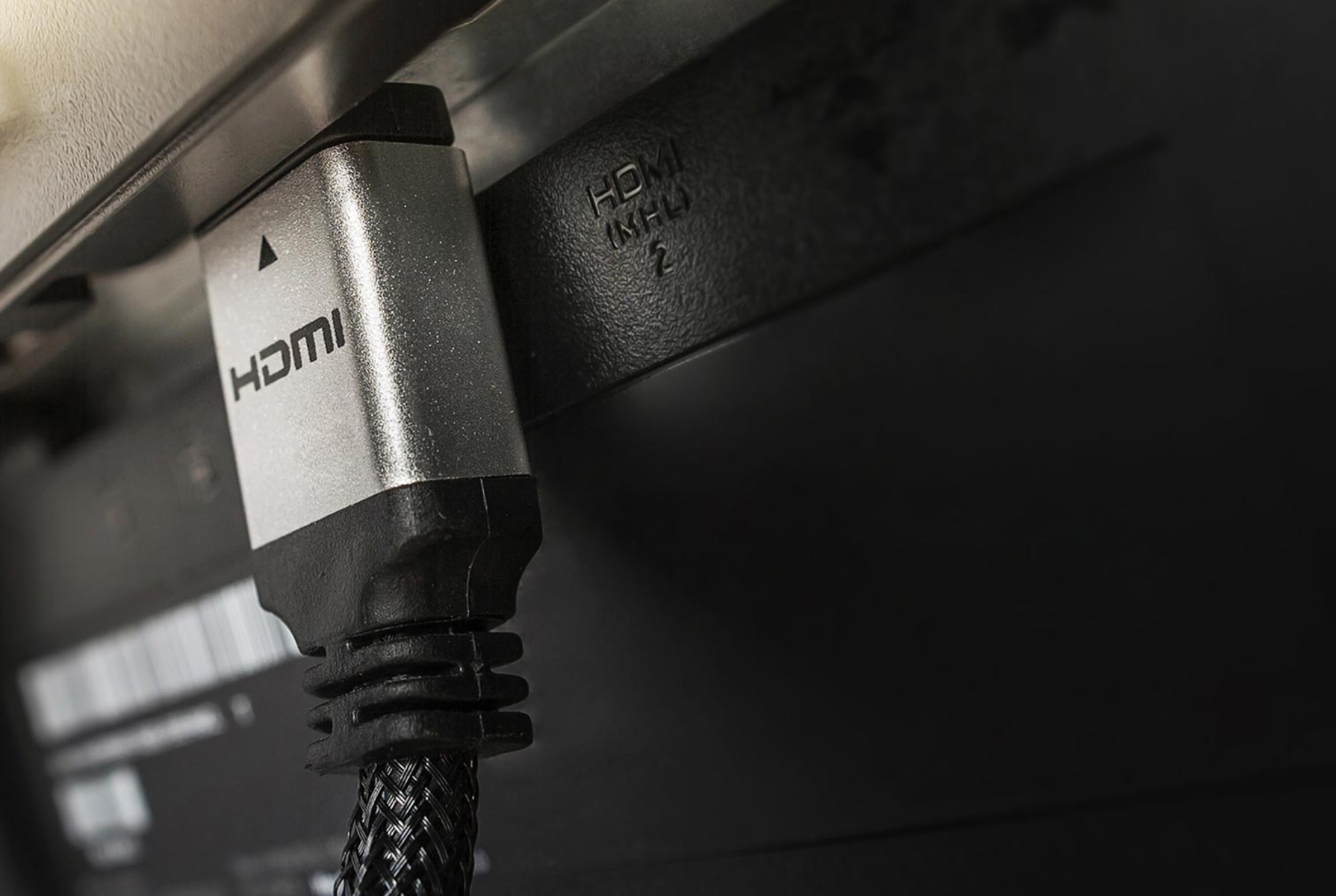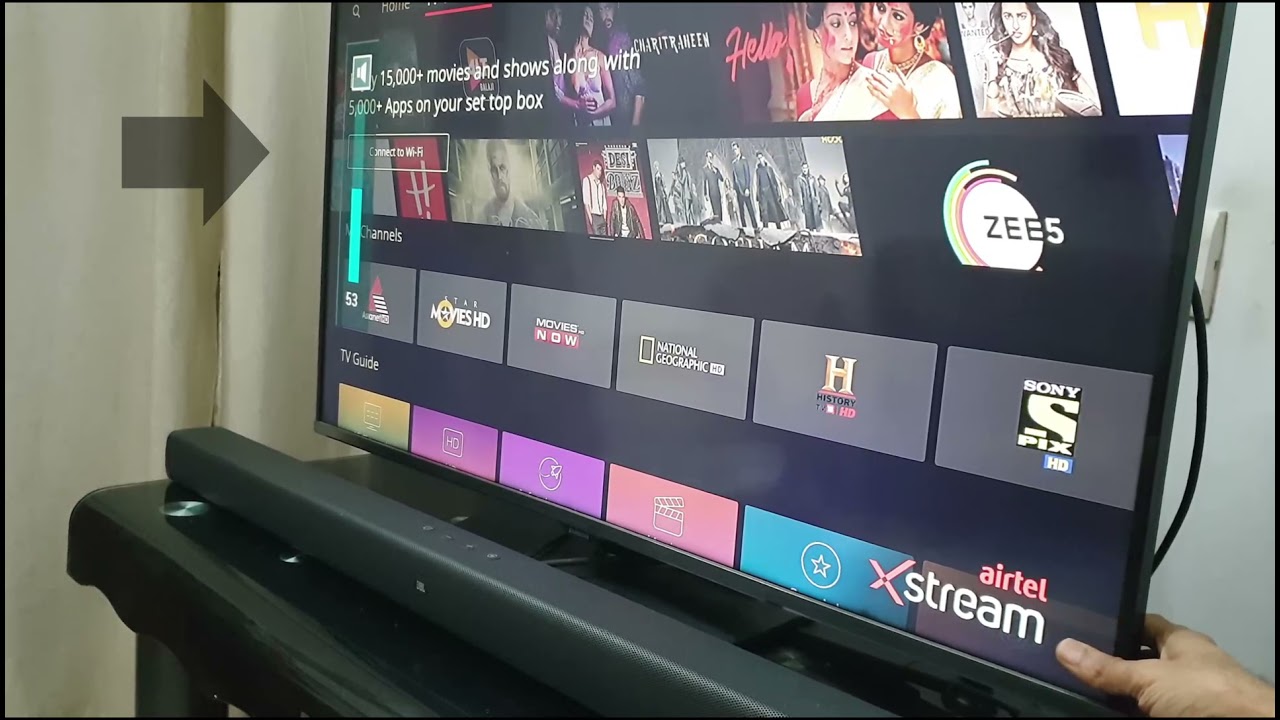Introduction
Connecting a soundbar to an AV receiver can significantly enhance your home entertainment system's audio performance. Soundbars are designed to deliver high-quality sound in a compact and convenient package, while AV receivers serve as the central hub for audio and video components, providing power and processing capabilities. By integrating these two devices, you can create an immersive audio experience that complements your home theater setup.
In this guide, we will explore the process of connecting a soundbar to an AV receiver, providing step-by-step instructions to help you achieve optimal audio performance. Whether you are a seasoned audiophile or a newcomer to home audio systems, this guide will equip you with the knowledge and skills necessary to seamlessly integrate a soundbar with your AV receiver.
As we delve into the intricacies of this connection, it's important to note that each AV receiver and soundbar model may have unique features and connection options. Therefore, it's essential to consult the user manuals for both devices to ensure compatibility and to familiarize yourself with specific connection methods and settings.
By following the guidelines outlined in this article, you will gain a deeper understanding of the technical aspects involved in connecting a soundbar to an AV receiver, empowering you to optimize your home audio setup and elevate your overall viewing and listening experience. Let's embark on this journey to unlock the full potential of your audiovisual system by seamlessly integrating your soundbar with your AV receiver.
Understanding the AV Receiver and Soundbar
Before delving into the process of connecting a soundbar to an AV receiver, it’s crucial to grasp the fundamental functions and capabilities of these two integral components of a home audio system.
AV Receiver:
- An AV receiver, short for audio-video receiver, serves as the central control unit for audio and video signals in a home theater setup. It acts as a hub for connecting various audio and video sources, such as Blu-ray players, gaming consoles, cable boxes, and streaming devices.
- AV receivers are equipped with built-in amplifiers to power the speakers and process audio signals, allowing for surround sound and immersive audio experiences.
- They often support various audio formats, including Dolby Atmos, DTS:X, and other advanced audio technologies, enabling a rich and dynamic sound output.
- Additionally, AV receivers feature multiple input and output ports, including HDMI, optical, and analog connections, providing flexibility for connecting different audio and video devices.
Soundbar:
- A soundbar is a compact, elongated speaker system designed to deliver high-quality audio, particularly for television and movie viewing. It is an ideal solution for those seeking improved sound performance without the complexity of a traditional multi-speaker setup.
- Soundbars often incorporate multiple speakers and built-in amplifiers to produce virtual surround sound, simulating the effect of a multi-speaker audio system from a single, space-saving unit.
- They typically offer various connectivity options, including HDMI, optical, and Bluetooth, catering to different audio sources and preferences.
- Some advanced soundbars support wireless subwoofers and satellite speakers, further enhancing the audio immersion and spatial effects.
Understanding the capabilities and features of AV receivers and soundbars is essential for making informed decisions when integrating these devices. By comprehending their functionalities, you can leverage their strengths to create a cohesive and powerful audio setup that elevates your home entertainment experience.
Connecting the Soundbar to the AV Receiver
When connecting a soundbar to an AV receiver, it’s important to consider the available input and output options on both devices to establish a seamless and high-quality audio connection. Here’s a step-by-step guide to help you navigate the process:
1. Identify the Input and Output Ports:
Begin by locating the input and output ports on both the soundbar and the AV receiver. Common connection options include HDMI, optical (Toslink), and analog audio ports. Refer to the user manuals for specific guidance on port locations and capabilities.
2. Select the Connection Method:
Depending on the available ports on your soundbar and AV receiver, choose the most suitable connection method. HDMI and optical connections are preferred for transmitting high-quality audio signals, while analog connections can be used as alternatives if digital options are not available.
3. HDMI Connection:
If both the soundbar and AV receiver support HDMI ARC (Audio Return Channel), connect an HDMI cable from the HDMI ARC output on the AV receiver to the HDMI ARC input on the soundbar. This allows for two-way audio transmission and simplifies the setup by consolidating audio and video signals through a single HDMI connection.
4. Optical Connection:
If HDMI ARC is not available, or if you prefer to use an optical connection, connect a digital optical cable from the optical output on the AV receiver to the optical input on the soundbar. Ensure that the optical cable is securely inserted into the respective ports to maintain a reliable audio connection.
5. Analog Connection:
If neither HDMI ARC nor optical connections are viable options, you can utilize analog audio cables to establish a connection. Connect the analog audio output from the AV receiver to the analog input on the soundbar using RCA or 3.5mm stereo cables, depending on the available ports.
6. Power On and Configure:
Once the physical connections are in place, power on the soundbar and AV receiver. Access the audio settings on the AV receiver to designate the soundbar as the primary audio output device. This step may involve selecting the appropriate input source and configuring audio output settings within the AV receiver’s menu.
By following these steps and selecting the appropriate connection method based on your devices’ capabilities, you can establish a robust and efficient audio link between your soundbar and AV receiver, setting the stage for an immersive audio experience.
Setting up the Soundbar and AV Receiver
After connecting the soundbar to the AV receiver, the next crucial step involves configuring and optimizing the settings of both devices to ensure seamless integration and optimal audio performance. Here’s a comprehensive guide to setting up your soundbar and AV receiver:
1. Power On and Initialization:
Ensure that both the soundbar and AV receiver are powered on and properly initialized. This includes connecting the power cords to a reliable power source and activating the devices using the respective power buttons or remote controls.
2. Soundbar Placement and Alignment:
Position the soundbar appropriately in your entertainment area, ensuring that it is centered and aligned with the television or projection screen. Optimal placement can enhance sound dispersion and imaging, contributing to an immersive audio experience.
3. AV Receiver Configuration:
Access the settings menu of the AV receiver to configure audio output options. Depending on the model, you may need to designate the connected soundbar as the primary audio output device, select the appropriate input source, and adjust audio processing settings to align with your preferences.
4. Soundbar Audio Modes and EQ Settings:
Explore the soundbar’s audio modes and equalizer (EQ) settings to tailor the sound output to your liking. Many soundbars offer preset audio modes for different content types, such as movies, music, and dialogue enhancement. Additionally, adjusting the EQ settings can fine-tune the sound signature to suit your acoustic environment and personal preferences.
5. Speaker Calibration and Room Correction:
If your AV receiver features automatic speaker calibration and room correction capabilities, utilize these functions to optimize audio performance. This process typically involves using a calibration microphone and the receiver’s built-in software to analyze the acoustic characteristics of your room and adjust the audio output accordingly.
6. Wireless Subwoofer and Rear Speaker Setup (if applicable):
If your soundbar system includes a wireless subwoofer or optional rear speakers, follow the manufacturer’s instructions to pair and position these components for an enhanced audio experience. Proper placement and synchronization of additional speakers can contribute to a more immersive and enveloping soundstage.
By meticulously configuring the settings of your soundbar and AV receiver, you can optimize the audio output to suit your preferences and the characteristics of your viewing environment. This comprehensive setup process lays the foundation for a captivating home theater experience that showcases the full potential of your integrated sound system.
Testing the Connection
After connecting and setting up your soundbar and AV receiver, it’s essential to conduct thorough testing to ensure that the audio connection is functioning as intended. Testing the connection involves verifying the audio output, evaluating surround sound performance, and confirming the synchronization of audio and video signals. Here’s a detailed overview of the testing process:
1. Audio Playback Verification:
Initiate audio playback from various sources, such as a Blu-ray player, streaming device, or cable box, to confirm that the soundbar is receiving audio signals from the AV receiver. Pay attention to the clarity, volume, and spatial distribution of the sound to assess the quality of the audio connection.
2. Surround Sound Evaluation:
If your AV receiver and soundbar support surround sound formats, such as Dolby Atmos or DTS:X, play content specifically designed for these audio technologies to evaluate the immersive audio experience. Listen for directional audio cues, overhead effects, and the overall enveloping nature of the soundstage to gauge the effectiveness of the surround sound reproduction.
3. Lip Sync and Audio-Video Synchronization:
Observe the synchronization of audio and video signals to ensure that there is no noticeable delay or mismatch between the on-screen action and the corresponding sound. Adjust the settings on the AV receiver, if necessary, to mitigate any lip sync issues and maintain seamless audio-video alignment.
4. Dynamic Range and Dialogue Clarity:
Test the dynamic range of the audio system by playing content with varying levels of loud and quiet passages. Assess the soundbar’s ability to reproduce subtle details and maintain clarity during intense audio sequences. Additionally, evaluate the intelligibility and presence of dialogue in movie and TV show playback to ensure clear vocal reproduction.
5. Music Playback and Audio Modes:
Explore different music genres and audio sources to assess the soundbar’s performance across a range of musical styles. Activate and compare the soundbar’s audio modes, such as music, cinema, or gaming presets, to determine their impact on audio quality and spatial enhancement.
6. Subwoofer and Rear Speaker Integration (if applicable):
If your soundbar system includes a wireless subwoofer or optional rear speakers, verify their seamless integration and synchronization with the soundbar’s audio output. Confirm that low-frequency effects are properly reproduced, and rear channels, if present, contribute to a cohesive surround sound experience.
By conducting comprehensive testing of the audio connection, surround sound performance, and synchronization of audio and video signals, you can ensure that your integrated soundbar and AV receiver system delivers a captivating and immersive audiovisual experience that enhances your home entertainment environment.
Troubleshooting Common Issues
While connecting a soundbar to an AV receiver can greatly enhance your home audio experience, it’s not uncommon to encounter potential challenges during the setup process. By being aware of common issues and their solutions, you can effectively troubleshoot and resolve any connectivity or performance-related problems. Here are some common issues and troubleshooting steps:
1. No Audio Output:
If you are not hearing any sound from the soundbar, ensure that the audio input on the soundbar is correctly selected to correspond with the connected input source on the AV receiver. Additionally, verify that the volume levels on both the soundbar and AV receiver are appropriately adjusted, and that the input source on the AV receiver is active and transmitting audio signals.
2. Audio Dropouts or Intermittent Sound:
Intermittent audio dropouts can be caused by wireless interference, outdated firmware, or incompatible settings. To address this issue, relocate wireless routers or other devices that may cause interference, update the firmware of your soundbar and AV receiver to the latest versions, and ensure that the audio output settings on the AV receiver are compatible with the soundbar’s input requirements.
3. Lip Sync Issues:
If you notice a delay between the on-screen action and the corresponding sound, access the AV receiver’s settings to enable any available lip sync correction features. Adjust the audio delay settings to synchronize the audio with the video output. Additionally, ensure that the soundbar’s audio processing modes are not introducing unnecessary delays.
4. Suboptimal Surround Sound Performance:
If the surround sound experience is underwhelming, confirm that the AV receiver’s audio output settings are configured to support the soundbar’s surround sound capabilities. Check for any audio processing modes or speaker configurations that may need adjustment to optimize the surround sound performance. Additionally, ensure that the soundbar is positioned and calibrated according to the manufacturer’s recommendations for optimal surround sound reproduction.
5. Compatibility and Firmware Updates:
Check the manufacturer’s websites for both the soundbar and AV receiver to verify compatibility and review any recommended firmware updates. Updating the firmware of both devices can address potential compatibility issues and improve overall system stability and performance.
6. Consult User Manuals and Support Resources:
If troubleshooting efforts do not resolve the issues, refer to the user manuals for both the soundbar and AV receiver to explore additional troubleshooting steps and support resources. Manufacturers often provide online support, FAQs, and user forums where you can seek assistance from other users and technical support representatives.
By addressing these common issues and following the recommended troubleshooting steps, you can effectively overcome connectivity challenges and optimize the performance of your integrated soundbar and AV receiver system, ensuring a seamless and immersive audiovisual experience.
Conclusion
Connecting a soundbar to an AV receiver opens the door to a world of immersive audio experiences within your home entertainment environment. By understanding the functionalities of these components, carefully establishing the audio connection, and optimizing the settings, you can achieve a seamless integration that elevates your audiovisual encounters.
Throughout this guide, we’ve explored the intricacies of connecting a soundbar to an AV receiver, emphasizing the importance of identifying input and output options, selecting suitable connection methods, and meticulously configuring the audio setup. By following the step-by-step instructions provided, you can navigate the process with confidence and precision, leveraging the full potential of your soundbar and AV receiver system.
Testing the connection and troubleshooting common issues are integral facets of the integration journey. Through comprehensive testing, you can verify the audio output, evaluate surround sound performance, and ensure the synchronization of audio and video signals. Additionally, being equipped with troubleshooting strategies allows you to address potential challenges effectively, ensuring optimal performance and stability.
As you embark on the endeavor of connecting your soundbar to an AV receiver, remember that each step contributes to the creation of a captivating audiovisual experience. Whether you’re enjoying cinematic blockbusters, immersive gaming sessions, or music concerts in the comfort of your home, the seamless integration of your soundbar and AV receiver system enriches every moment with dynamic and enveloping sound.
Ultimately, the fusion of your soundbar and AV receiver transcends the realm of audio equipment; it becomes a conduit for transformative experiences, enhancing the emotional impact and depth of your entertainment encounters. As you immerse yourself in the captivating soundscapes and nuanced audio details, the integration of these devices becomes a testament to the power of technology to enrich our lives and elevate our senses.
Embrace the journey of integrating your soundbar with your AV receiver, and revel in the symphony of sights and sounds that await you within your home theater. With each connection, setting adjustment, and troubleshooting triumph, you are one step closer to unlocking the full potential of your audiovisual sanctuary.







